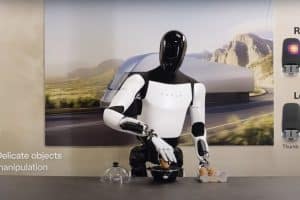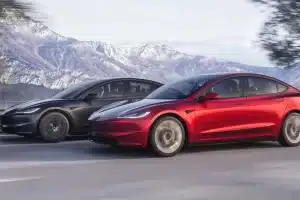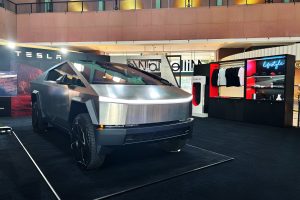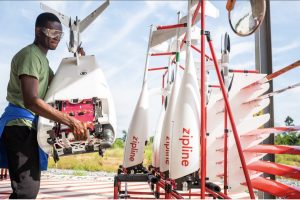- 🚗 Panasonic aims to roll out updated versions of the 2170 and 4680 battery cells as early as this year.
- 🔄 Tesla’s collaboration with Panasonic involves jointly operating the Gigafactory Nevada facility.
- 🌐 Continuous improvement is crucial for companies like Tesla and Panasonic to stay ahead in the growing EV landscape.
- 🔋 Panasonic plans to revolutionize its 2170 and 4680 battery cells used in Tesla’s Model 3 and Model Y.
- 🏭 To increase production by 10%, Panasonic will invest $4 billion in a new factory in Kansas for 2170 cells and another for 4680 production.
- 📈 The new cells’ availability is expected to contribute to Tesla’s potential to offer cheaper electric vehicles.
- 📍 The location of the third factory, to be revealed by March, will require thousands of employees.
- 💰 Panasonic turned down $700 million in state incentives from Oklahoma for the new plant in December 2023.
- 🌍 The collaboration signifies the ongoing efforts of established companies to compete with emerging EV manufacturers.
In the dynamic world of electric vehicles (EVs), the synergy between innovation and collaboration is key to staying ahead. One such groundbreaking collaboration that holds immense promise for Tesla’s future is the partnership with Panasonic. In this blog post, we delve into Panasonic’s ambitious plans to roll out updated versions of the 2170 and 4680 battery cells, potentially reshaping the landscape of EVs as we know it.
Unveiling the Power Within: Panasonic’s Battery Cell Upgrade
Tesla enthusiasts, buckle up – the driving force behind your favorite electric vehicles is about to get an upgrade. Panasonic, a stalwart in battery production, aims to introduce refined versions of the 2170 and 4680 battery cells as early as this year. This technological leap is poised to enhance the performance and affordability of Tesla’s Model 3 and Model Y.
Powering the Future Together: Tesla and Panasonic’s Collaborative Gigafactory Venture
At the heart of this innovation lies the Gigafactory Nevada facility, where Tesla and Panasonic join forces in a collaborative effort. Operating jointly, these industry giants are set to revolutionize battery technology and production, ensuring that they remain at the forefront of the rapidly evolving EV landscape.
Navigating the Competitive Terrain: Continuous Improvement as the Guiding Principle
In a world teeming with new EV competitors and cutting-edge technology, companies like Tesla and Panasonic are compelled to embrace a culture of continuous improvement. The ability to adapt, innovate, and enhance products is not just a strategy; it’s a necessity to avoid being left behind by the hungry up-and-coming players in the industry.
Battery Evolution: Panasonic’s Overhaul of the 2170 and 4680 Cells
The 2170 and 4680 battery cells, long associated with Tesla’s success, are undergoing a transformative makeover. Panasonic’s Chief Technology Officer for EV batteries, Shoichiro Watanabe, envisions these new iterations to be available within this year. The focus is not just on upgrading but on expanding battery capacity and improving productivity simultaneously.
A $4 Billion Investment for Progress: Building the Future in Kansas
To facilitate this technological leap, Panasonic is investing a staggering $4 billion in a new factory in Kansas. This investment is strategically allocated for the production of both the 2170 and 4680 cells. The goal is not just production expansion but also a substantial increase in output by approximately 10%.
Driving Affordability: Impact on Tesla’s Electric Vehicle Prices
As Panasonic works towards refining and expanding its battery production, the ripple effect on Tesla’s electric vehicle prices is a point of interest. The potential availability of upgraded battery cells could contribute to making Tesla’s EVs more affordable, opening up avenues for a broader consumer base to embrace sustainable transportation.
The Third Factory: A Mystery Unveiling
The anticipation builds as Panasonic plans to reveal the location of its third factory by the end of the fiscal year in March. This mystery factory, expected to require a substantial workforce, adds another layer of intrigue to the unfolding narrative of Panasonic’s ambitious plans for the future.
Strategic Decisions: Panasonic’s Refusal of Incentives
In a notable turn of events, Panasonic turned down a substantial $700 million in state incentives from Oklahoma for the construction of the new factory. This decision reflects the company’s commitment to strategic choices aligned with its vision for growth and innovation.
Competing with the New Wave: Established Companies vs. Emerging EV Manufacturers
Panasonic’s collaboration with Tesla highlights a broader industry trend – the constant battle between established companies and emerging EV manufacturers. The push for technological advancements and the ability to adapt to market changes are critical factors in this ever-evolving competition.





